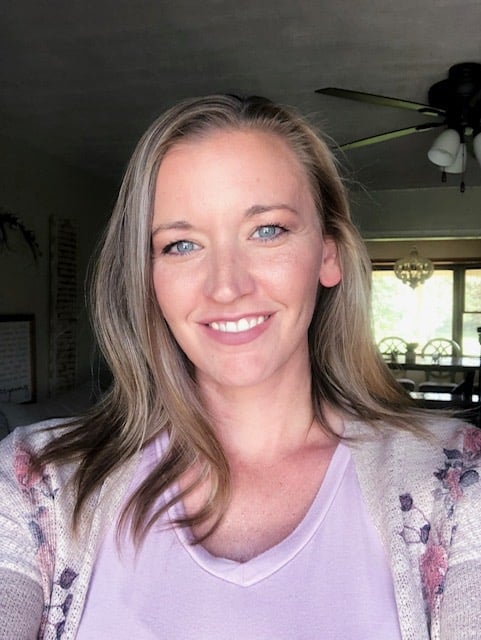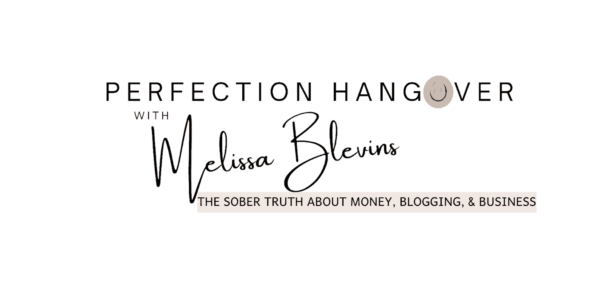This post may contain affiliate links. Click here to read my full disclosure.
Amazon made the announcement this week that it is dramatically reducing its commissions (some dropping from 8% down to 1-3%).
This will impact so many bloggers’ income in a negative way, and we all knew it was coming, but it’s still a hard pill to swallow.
In times like these, during a likely economic recession, that we have to diversify our income sources.
Ad revenue has also taken a major hit, with RPM’s dropping by up to 60% for some bloggers.
Before you throw in the towel and decide to quit blogging, I want to share 6 simple steps to increase affiliate marketing conversions.
Average Affiliate Conversion Rate
According to AWIN, there is no true average affiliate marketing conversion rate. All products vary, and all commission structures and verticals are different.
My average affiliate conversion rate with Amazon last year was 6.98%, which I feel is pretty good (for Amazon).
But for my products that are ranking in Google search results, I’m seeing 20-25% conversion rate.
Affiliate marketing success is tied to buyer search intent. If you just drop an affiliate link in front of someone, they’re not likely to purchase.
But if they’re searching Google for a discount or coupon code or information about the “best hair care products for women whose hair is thinning” and you’re able to rank for that term, you’re more likely to convert and earn a commission.
I know that term was very specific, but you have to be in order to increase conversions.
Keep reading, and I’ll share how I’m on track to earn $2000+ from a single affiliate product this month.
Step 1: You Need a Blog And YouTube Channel
While it’s true that you can be an affiliate marketer without a blog, you can make more money if you learn how to maximize reach, and blogging and YouTube are two of the best ways to do that.
Why Do You Need a YouTube channel?
YouTube is the #2 search engine in the world (behind Google). Bet you didn’t know that!
People like to see real-life reviews, testimonials, and instructions through video. It brings a whole new level of authenticity to the mix.
Imagine if I was a car dealer and sold cars but had no online presence other than my site with my own testimonials that I provide.
You’d be instantly skeptical, right? Where are the unbiased reviews? Where are the happy customers?
The more ways people have to interact with you and get to know you, the more trustworthy you become.
Affiliate marketers and bloggers are business owners. We need a place where we can communicate and interact with our tribe.
YouTube is a great place to do that, and when you optimize a YouTube video (the same as you do a blog post), you have the opportunity to rank videos in search results where it might be more difficult to rank an article.
When you rank on Google, you get more traffic. When you get more traffic, you make more money through ad revenue, and you also increase affiliate marketing conversions.
Check out my tutorial on How to Start a Blog here, and take advantage of my coupon for 65% off hosting.
For a limited time, I’m gifting my 1-hour video training FREE when you purchase hosting through my discount link.
Simply email me or comment below when you’ve made your purchase, I will confirm and send the video training to your inbox.
This training features screenshare of my personal blog behind-the-scenes in WordPress.
This video shares the basics of keyword research and optimizing posts for Google search ranking.
Learn how to start your blog or skip straight to the point and sign up for hosting for just $2.95/month.
You need to not only diversify income but also reach. My YouTube audience is a bit different than my blog audience and my Pinterest audience.
But each of them points prospective buyers to the products and services that I recommend. This is the basis of affiliate marketing.
I might record a video about the best Personal Finance books you should read before you’re 30.
Then, I might write a blog post listing out all of the books and sharing my top pick.
I’d then create pinnable images in Canva using Carly Campbell’s manual pinning strategy.
This is the trifecta of affiliate marketing success. If you can tie all three platforms together, you’ll expand your reach and increase conversions.
This brings me to my next step:
Step 2: Find a Product You Love and Partner with the Company
You can apply to become an affiliate with almost any company.
This is a KEY STEP, y’all. Don’t just look for products that you can sign up for in AWIN or Shareasale or CJ Affiliates.
These are great partners, but here’s my suggestion:
Find a company whose product you love and email them. Ask if they would like to partner with you, and, more importantly, if they have a coupon code that you could offer to your audience that’s specific to your brand!
A few months ago, I partnered with a skincare company to offer affordable online dermatology appointments.
This company offered me a coupon for $20 off with my coupon code (PH20) at checkout.
I earn $10 per signup, and they pay me monthly on (or near) the 1st of the month.
How to Increase Affiliate Marketing Conversions to 22% and Higher
- October 2019 (first month as an affiliate) – $170 (17 conversions)
- November 2019 – $90 (9 conversions)
- December 2019 – $300 (30 conversions) This was where I started to really get excited!
- January 2020 – $780 (78 affiliate conversions)
- February 2020 – $740 (74 conversions)
- March 2020 – $1080 (108 affiliate sales, y’all!!)
- April 2020 – To Be Determined
It takes a while to start ranking for a specific term and to get organic traffic.
Here’s my organic traffic to that specific article reviewing the product month-by-month.
You’ll see the first two months I didn’t receive any Google SEO love. What I did to combat this and earn commissions was that I created a video review on YouTube with a link back to my blog review and offered my coupon code in the video and description.
- October 2019 – 0 Sessions from Google
- November 2019 – 0 Sessions from Google (still too new)
- December 2020 – 198 sessions from SEO!
- January 2020 – 363 sessions from Google
- February 2020 – 375 sessions from Google
- March 2020 – 485 sessions from Google SEO
- April 2020 (MTD as of 4/19 am) – 654 sessions!
As you can see, when my Google traffic increased, so did my affiliate conversions for this product!
As a result, my income has increased every single month. Here are my conversion rates each month:
- October 2019 – 0%
- November 2019 – 0%
- December 2020 – 15%
- January 2020 – 22%
- February 2020 – 20%
- March 2020 – 22%
- April 2020 – TBD
At the current rate, I’m estimating approximately 1050 sessions from Google in April.
If this converts at 22%, I’ll earn approximately $2,310 in commission from this affiliate alone!
I’ve NEVER earned more than $400 in a single month with Amazon. So the fact that they dropped commission feels like a blessing.
Now I am able to focus on doubling down on this strategy to increase income from other affiliates.
$10 is quite a low commission. Imagine if we were able to duplicate this strategy for a product that pays a commission of $40.
If this product paid $40 per sale, and in the month of April, I was able to convert 231 sales, I’d earn $9,240.
It’s important to note that this affiliate post does not receive thousands of pageviews!
You don’t need thousands of pageviews. You need buyers who are engaged and intending to purchase your product.
I can’t stress this enough!
Step 3: Master Your SEO Strategy
Now that you know how important SEO is to success, it’s time to nail down a strategy that works.
I started ranking for some keywords here and there my first year blogging, but it wasn’t until I started sizing up my competitors that I was able to outrank them.
I purchased Stupid Simple SEO in November of 2019 and used the strategies learned to accelerate my SEO efforts.
I’m a firm believer in using courses and books to learn and grow.
This is by far my #1 favorite course I’ve ever purchased. Totally worth the price of admission.
He’s opening up the course tomorrow, and now that your stimulus money is burning a hole in your pocket, it’s time to invest in yourself.
I know we all have important allocations and priorities right now. If you’re struggling and can’t swing the course right now, he offers some free webinar training as well.
Since purchasing the course, I have received 93,814 sessions from Google.
Here’s an infographic with my organic traffic prior to taking Stupid Simple SEO and after taking the course and updating my posts.

Income for Last Quarter of 2019 from affiliate marketing totaled $1,641.98.
Income for First Quarter of 2020 from affiliate marketing only (not including sponsored posts, ad revenue, etc) totaled $4,777.33!
That’s an increase of 190%!!!
So yes, there’s a small investment for Stupid Simple SEO, but I have earned so much more affiliate income to justify the expense.
Step 4: Master Your Pinterest Strategy & Increase Affiliate Marketing Conversions
Now, this goes without saying, but I’ll say it anyway:
The more traffic hits to your affiliate articles, the more you’ll convert, and the more money you’ll earn as a result.
Melissa Blevins, Perfection Hangover
I started out with a basic Tailwind strategy…you know..the same thing every other blogger is sharing.
“Sign up for Tailwind with my affiliate link”, they said. “Traffic will explode,” they said.
Unfortunately, I don’t feel the same about Tailwind as I did when I first started blogging. Pin schedulers are good if you just want to schedule pins once a week and be done with it.
I still use Tailwind some, but in a much more limited capacity than before.
Once I started manually pinning, my pageviews increased, and then I added promoted pins.
And that’s where my affiliate conversions for a blogging product grew exponentially.
I’m currently paying $.10 per click with a max of $3 per day on one pin and $5 per day on another, and my average conversion rate for the past week has been 28.5%.
Pinterest seems to really be targeting people who are likely to buy.
It took me a while to grow my Pinterest traffic. And by traffic, I mean clicks…not impressions.
Keep in mind that the number of impressions is a vanity metric. It means nothing because it doesn’t translate to visits to your website which translate to money.
Check out Pinteresting Strategies for the exact strategy I use to pin manually (about 20 minutes per day).
This is one of the most affordable courses available, and I recommend it over a Tailwind account at this point.
Step 5: Be Consistent
I’m the queen of perfectionism. In fact, it’s why I named this blog Perfection Hangover.
I know what it’s like to get excited about learning something new only to psych myself out because I have no clue what the hell I’m doing.
If you’re waiting for “someday” to:
- Start Your Blog
- Start Your YouTube Channel
- Learn How SEO Can Help You
- Learn Affiliate Marketing
- Create Your Digital Products
- Start Getting FREE Traffic from Pinterest
You’re never going to be fully ready. Just jump in and get started, and you can learn along the way like I did!
Once you make the decision to go “all in”, you have to be consistent.
Create everyday habits that force you to double and triple down on the strategies that are working.
Prioritize those tasks that have the greatest ROI (like learning SEO or manually pinning).
Step 6: Disable Ads on Affiliate Marketing Posts
As I mentioned earlier, ad revenue is down right now. Every single company is or will be feeling the aftershock of COVID-19.
I love Mediavine so much. I know it’s like the ultimate goal to get to Mediavine, right?
One of my first blogging goals was to get to 25,000 sessions so I could start earning decent ad revenue.
But you can’t put all of your eggs in one basket.
I cannot stress this enough.
There are differing opinions on the subject of ads. On one side of the aisle, antagonists would argue that ads cause a bad user experience, and the income from ad revenue is not worth it.
Protagonists understand that ads are played during commercials, on YouTube videos, on social media, etc, and there’s no harm in offering some advertising on your site.
However, when you have a specific goal in mind for a post, like affiliate conversions, it might be best to disable ads on that particular post.
The reason is you don’t want the reader becoming distracted and clicking on an ad or abandoning your site before they’ve been given the chance to learn more about your offer.
Video ads, mobile adhesions, in-content ads, and more can become overwhelming causing the user to exit.
You don’t want that. Here’s a tutorial on how to disable ads on a specific post within the Mediavine dashboard.
Conclusion
This economic crisis has been a wake-up call to all of us. We’ve gotten comfortable, and it’s time for us to step out of our comfort zone and diversify.
You can increase affiliate marketing conversions by following the six steps above.
Let me know if you used my Bluehost coupon code for hosting, and I’ll send you my free 1-hour video tutorial on keyword research, optimization, and more.

Life is a collection of memories and experiences. There are ups and downs. I am so grateful for God’s grace and am on the journey to a renewed spirit, free of perfectionism. Perfection Hangover offers the sober truth – no filter.



21.5 inch capacitive touch screen monitor is built with the highest quality materials. It has a very thin bezel and is capable of displaying 1080p.Buy your Zuljana touch screen monitor.
Omg I started a similar journey during this pandemic! Thanks for keeping me motivated. Just brought in affiliate links this week and started seeing conversions. This sure is a learning journey but I enjoy it way more than my desk job. Hoping to quit mine too 🥳
Pingback: Blogging vs YouTube in 2021: Should You Start a YouTube Channel or Blog or Both? | Perfection Hangover
Great post Melissa! I especially enjoyed the Pinterest side of things. I’ve switched to manual pinning and that helped as well. I’m always looking to optimize my posts for affiliate conversions.
Thanks, Kyle! I have learned that Pinterest and SEO are the 2 main factors in successfully increasing traffic, resulting in more income.